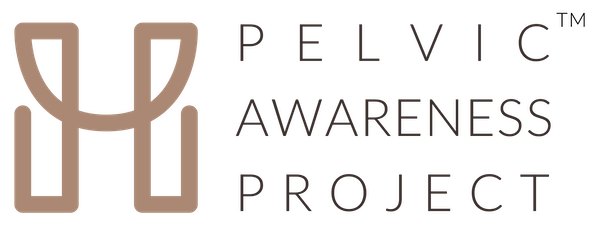Hearing the word “endometriosis” may give rise to many questions, and some fear. The name itself sounds dire! Don’t despair. If you have endometriosis, you’re not alone. Women all over the world suffer from this condition, and it can be diagnosed and treated. Here’s all you need to know about endometriosis.
Endometriosis Explained
Endometriosis: even the long, somewhat scary-sounding name is daunting.
It’s also a common ailment suffered by women all over the globe.
This inflammatory chronic pain condition is estimated to affect at least 11 percent of women worldwide.1 That number could be much higher, because this painful condition is under-studied and likely under-diagnosed.
If you have endometriosis — or symptoms that could point to it — here’s everything you need to know.
What is Endometriosis?
It’s estimated that endometriosis affects:1
- 6.5 million women in the United States.
- more than 190 million worldwide.
- one in nine women of reproductive age in the United States.1
It happens when the same tissue that lines the uterus grows outside of the uterus. It can affect the ovaries, fallopian tubes, and the tissue lining the pelvis. In rare cases, endometriosis growths are found beyond the pelvic area.2
This tissue acts the same way as the lining of the uterus — it thickens, breaks down, and bleeds with each menstrual cycle. But because it’s outside of the uterus, there’s no way for the shedding tissue to leave the body. That can lead to the growth of cysts, scar tissue, and bands of fibrous tissue called adhesions. These growths can cause pelvic tissues and organs to stick to each other.2
Women suffering from endometriosis typically suffer from intense pain, especially during menstrual periods. It can also lead to fertility problems.2
Where Can Endometriosis Develop?
This “extra uterine” tissue commonly grows in the space behind your uterus, the space between your uterus and rectum or bladder, or on your uterine wall. It can also develop on your ovaries, fallopian tubes, or your peritoneum — the membrane that lines the inside of your abdomen and pelvis.3,4
Less common places for endometriosis to develop include your:3, 4
- vagina
- cervix
- vulva
- rectum
- bladder
- intestines
- stomach
- diaphragm
- lung
Endometriosis is often diagnosed in women in their 20s and 30s.
What Are Endometriosis Symptoms?
Endometriosis SymptomsChronic pelvic pain, particularly during menstrual periods, is the main symptom of endometriosis. We know what you’re saying: We all experience cramping and pain during our periods! But for those with endometriosis, the pain is described as far worse than usual, and often becomes worse over time.
This pelvic pain and cramping may start before your menstrual period and last for days into it. Along with the pelvic pain is often lower back and stomach pain.
Other symptoms include:
- Pain during or after sex.
- Pain during bowel movements or urination, particularly before or during a menstrual period.
- Heavy bleeding during periods or bleeding between periods.
- Infertility.
Women also report fatigue, diarrhea, constipation, bloating or nausea, which are more common before or during menstrual periods.2
How is Endometriosis Diagnosed?
If you have these symptoms, it’s important to see a doctor and describe your situation, including where and when you feel pain. Then a physical exam, including a pelvic exam, will be the first step in looking for endometriosis.
Your healthcare provider may also use tests such as an ultrasound — which can locate cysts but can’t confirm endometriosis — or Magnetic Resonance Imaging (MRI) — which may identify the location and size of endometriosis growths.5
But the only way to know for sure is with surgery. Typically a doctor will perform a laparoscopy, which is a minimally invasive technique using a thin, lighted tube or laparoscope. Sometimes a biopsy is taken, which when a small amount of tissue is removed during the procedure for testing.6
The symptoms of endometriosis may seem like other conditions that cause pelvic pain, making diagnosis difficult. Other conditions that have similar symptoms include: 2
- pelvic inflammatory disease
- ovarian cysts
- irritable bowel syndrome, which can happen along with endometriosis
Some researchers have called endometriosis the “missed disease,” because it’s unclear what causes it, and because of inconsistencies in its diagnosis and management. It has also gained little attention when it comes to global research funding and with government policy, especially compared to other long-term conditions like diabetes.7
Diagnosis is also difficult because everyone experiences endometriosis differently. You may have some, all, or none of the symptoms, and the symptoms could be a sign of a different condition. Doctors classify it in stages — from stage 1 to stage 4 — but this is based on where the tissue is, how much there is, and how far it’s spread. The numbers are not related at all to the amount or severity of your symptoms.4
Endometriosis can also cause problems because it requires surgery to definitively diagnose. A delay can increase the intensity of the symptoms, and treatments like pain management may be ineffective at dealing with long-term risks of endometriosis.1
Can I Get Pregnant with Endometriosis?
It’s estimated that up to four out of 10 women who have infertility issues have endometriosis. That’s because the inflammation caused by endometriosis may damage the sperm or egg, or interfere with their movement through the fallopian tubes and uterus. In severe cases of endometriosis, the fallopian tubes may be blocked by adhesions or scar tissue.6
In fact, some women are diagnosed with endometriosis during tests for infertility. That’s again due to the variation in symptoms. Pain is not an indicator of the extent of endometriosis, since some women have a small amount of tissue with lots of pain, and others have lots of endometriosis tissue with little or no pain. Still others have no symptoms at all, and are diagnosed when they can’t get pregnant or after having surgery for another reason.2
Don’t despair. Even women with mild to moderate endometriosis can still conceive and carry a pregnancy to term. 2
Are There Other Complications of Endometriosis?
Besides the chronic pain, other side effects and possible fertility implications, some studies suggest that endometriosis may raise the risk of ovarian cancer. However, the overall lifetime risk of ovarian cancer is low, and it stays fairly low in people with endometriosis.
Although rare, another type of cancer called endometriosis-associated adenocarcinoma can happen later in life in those who’ve had endometriosis.2
There are some risk factors for developing endometriosis, such as if you have a mother, sister or daughter who has the condition. But there is no known cause or specific way to prevent it. That’s why it’s important to be educated about the side effects and to discuss any problems early with your doctor.4
How is Endometriosis Treated?
Once you’ve been diagnosed with endometriosis, your doctor will work with you on a treatment plan, considering the following factors:3
- The seriousness of endometriosis tissue growth.
- The severity of symptoms, most often pain.
- Whether you plan to get pregnant.
- Your age.
For instance, if you’re planning to get pregnant, treatment may focus on improving any fertility issues while also treating the pain. The other end of the spectrum is women who are past the age of having children, in which a hysterectomy to remove your uterus and/or ovaries may be suggested.3
Other options include medications to deal with pain or to suppress your menstrual cycle. The laparoscopy procedure is a non-invasive way for the doctor to identify endometriosis with a high-definition camera, and also use surgical instruments to remove the painful tissue.3
Seek Diagnosis and Treatment for Endometriosis
While many women live with endometriosis, you don’t have to suffer. This chronic disease can be associated with severe, life-impacting pain that can affect many areas of your life: during periods, sexual intercourse, bowel movements, and urination. It can create chronic and debilitating pelvic pain, abdominal bloating, nausea, fatigue. It can lead to depression, anxiety, and infertility.
Although there is currently no known cure, there is hope for effective treatment, making early diagnosis vital.8
Find Help for Endometriosis with the Physician Finder Tool
Hearing the word “endometriosis” from your doctor can be scary. The name is derived from the word “endometrium.” That’s the tissue that lines your uterus, since the condition is caused by having endometrial-type tissue outside of your uterus.4 You’re not alone; don’t suffer in silence.
If you have any of the symptoms of endometriosis, see a healthcare provider as soon as possible. Use our Physician Finder to find a doctor near you with expertise in women’s health. Endometriosis can be better treated with early diagnosis, education, and a treatment plan from healthcare professionals.2
It’s important to talk to your doctor about any concerns with your pelvic health.
More easily diagnosed pelvic conditions like stress urinary incontinence are caused by weakened pelvic floor muscles, which can be strengthened by “Kegels” or pelvic floor muscles exercises.
An easy-to-use tool like the Gynesis pelvic floor trainer shorts will help women of any age to properly perform Kegels. The exclusive Multipath Technology delivers electrical stimulation to multiple areas of your pelvic floor muscles, strengthening this important area and keeping you on a path to good health.
















